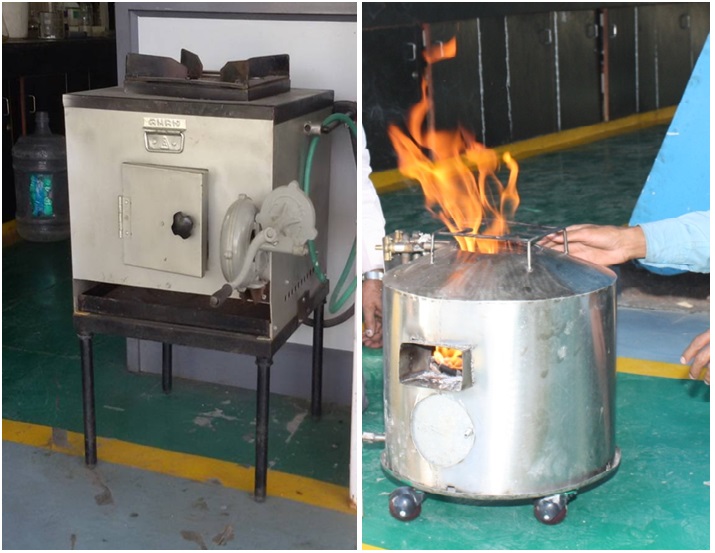Overview
Work
Sustainable Energy
- UCOST Home
- Sustainable Energy
- You are Here
Multifuel Cooking Patented Chulha
In a developing country like India providing rural and urban households with modern energy services is a critical step towards development. A large majority of households particularly in rural and semi urban areas rely on traditional biomass fuels for cooking, that represent a significant proportion of domestic primary energy consumption. The main disadvantages of these fuels are: they are inefficient energy carriers and their heat is difficult to control; their (incomplete) combustion produces harmful emissions; their rate of extraction is often not sustainable for forests etc. A complete transition to clean cooking fuels such as (LPG) will address many of these issues however there are many barriers to this including some critical socio-economic challenges. Despite the benefits of fuel switching, clean cooking fuels are not actively being used in majority of the country. Their failure to attain widespread use can be attributed to a number of market, policy and technical barriers. One of the major issues is affordable and reliable supply as cleaner fuels like LPG are expensive for many households, and the high cost of compatible stoves further discourages their use. In addition, many consumers are hesitant to adopt the new technology, reflecting the lack of public awareness of the benefits the cleaner fuels can offer. Therefore, there is a need for efficient and user-friendly multifuel stoves which can overcome the above and other drawbacks. In order to address sustainability issues across the majority of the population and be a catalyst for inclusive growth in India the University of Petroleum and Energy Studies has developed this multifuel improved cooking chulha that is capable of operating both on conventional and renewable energy sources available in rural and urban area. Some specific way in which you measure the impact, essentially the social impact of the project.
- This multifuel stove reduces the amount of carbon monoxide produced during combustion by 85% to 100% (when measured from a cold start). Also, the reduction in amount of carbon monoxide consequently raises the combustion temperature of the stoves which subsequently increases the overall efficiency.
- This is one of the most efficient stoves as far as performance and emissions are concerned. The thermal efficiency of this stove was found to be 29% whereas The CO/CO2 ratio, TSP and body temperature were observed to be 0.03, 1.7mg/m3 and 48°C respectively.
- With a metal body the stove has lower production costs and increased durability and is effectively maintenance free (except occasional cleaning of internal parts such as grate and burner).
- Social Impact: Promote Livelihood opportunities, Improved health of communities (particularly women and children), Access to modern energy carriers, Improved Energy Security, Value addition & entrepreneurship through trainings on local resources, Large scale replication potential, Drudgery Reduction and Improved Standard of Living.
|
|
Some mathematical expression / symbols used in this web section (if any) from report could not copied in the exact format. So if you want to read the report please download it from here. |




Social Media Links